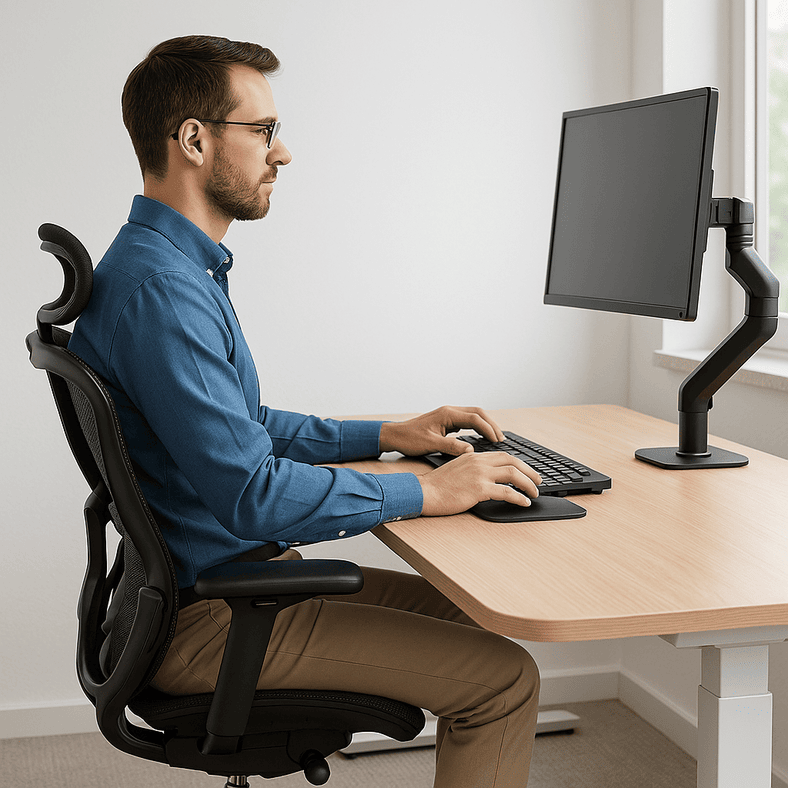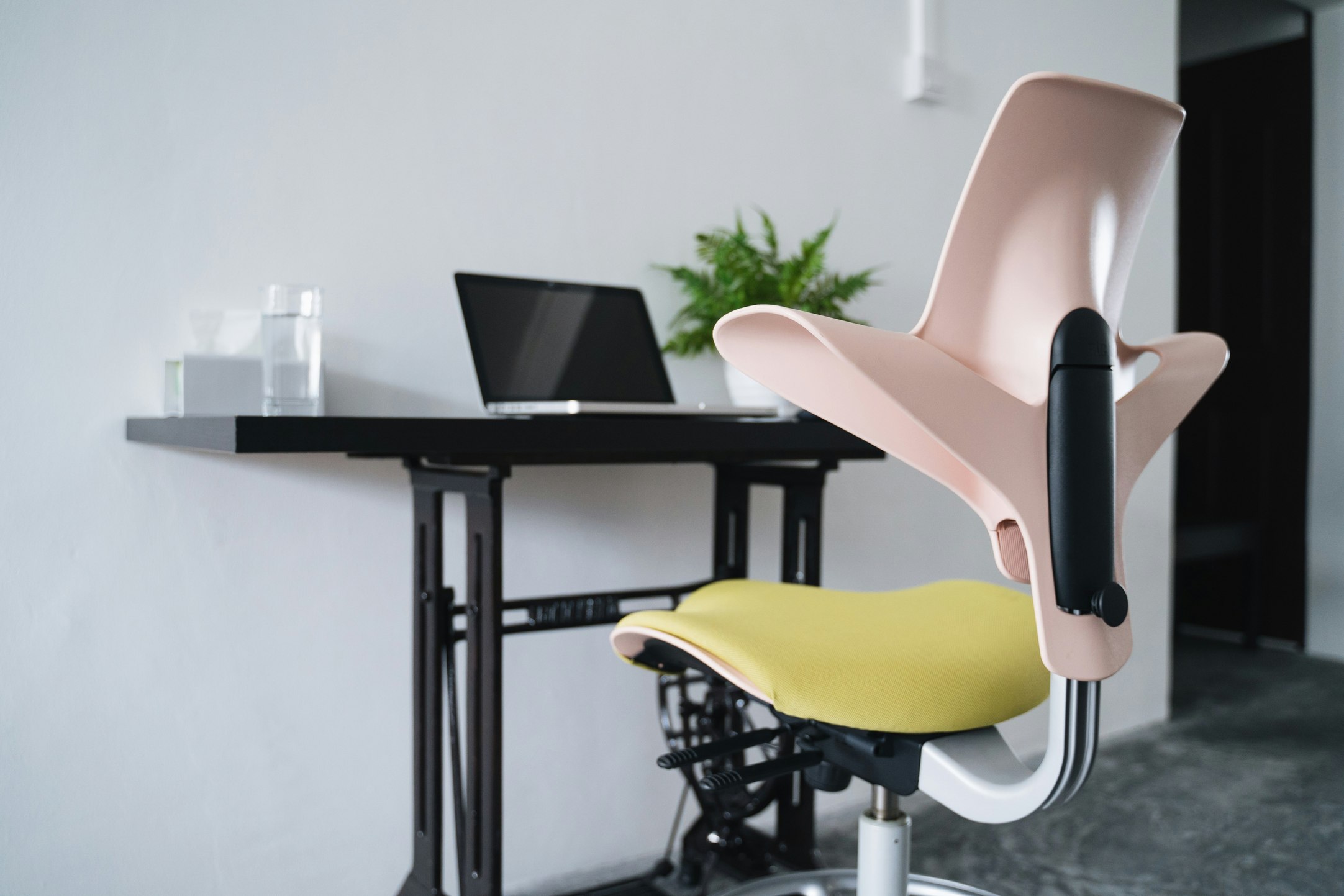In a constantly evolving professional world, the ergonomic workstation has become a critical factor in employee health. Once limited to chair settings or desk height, modern ergonomics goes far beyond. Today, it includes the entire work environment, from lighting and screen alignment to standing desk habits.
Adopting a good ergonomic setup helps improve long-term comfort, prevent musculoskeletal disorders (MSDs), and support healthy productivity. Here’s a practical guide to creating an ergonomic workstation, including the benefits of alternating between sitting and standing throughout the day.
Understanding the importance of office ergonomics
Office work often means staying in a static seated position in front of a screen for hours. Many workspaces are not adapted to workers’ body types or habits. The result: back pain, neck and shoulder tension, heavy legs, eye strain. Over time, these seemingly minor issues can turn into serious health risks.
The goal of an ergonomic workstation is to create a space that supports both the physical and cognitive needs of the user. It’s not just about comfort. It’s a proactive approach to preventing workplace injuries, particularly MSDs, one of the leading causes of sick leave in France.
Standing desks: a rising trend
To counter the effects of sedentary work, more companies are investing in sit-stand desks. These allow users to switch positions throughout the day. Once limited to industrial or retail settings, standing desks are now becoming mainstream in office environments.
Key benefits of standing while working:
– Reduced back pain: regular changes in posture help relieve pressure on spinal discs
– Improved blood circulation: standing activates leg muscles and reduces heaviness
– Better focus: some employees report feeling more alert while standing, especially for short tasks
– MSD prevention: alternating between sitting and standing reduces strain on specific areas of the body
How to create an ergonomic workstation
A well-designed workstation should be tailored to each individual. Whether sitting or standing, here are the essential elements to consider (see also our article “How to create an ergonomic and healthy workspace”):
Desk and work surface height
Adjust your desk so that your forearms rest naturally, forming a relaxed angle at the elbows. A height-adjustable desk lets you switch easily between sitting and standing positions throughout the day. When working standing up, set the work surface at elbow height to avoid raising your shoulders or leaning forward.
Screen and work tools
Position the monitor at eye level and about 50 to 70 cm from your face. Use an adjustable stand or arm mount for precision. Keep your keyboard and mouse within easy reach to avoid awkward movements.
Chair or ergonomic seat
Choose an ergonomic chair with adjustable height and tilt, and proper lumbar support. Keep your feet flat on the floor or use a footrest if needed.
Lighting
Proper lighting helps reduce eye strain. Prioritize natural light and avoid screen glare. A desk lamp with adjustable intensity can also help.
Movement space
Your setup should allow free movement. Keep the work surface uncluttered and ensure clear pathways. Layout should support natural gestures, especially for upper body and hands.
Avoid standing still too long: why alternating is essential
Standing has many advantages, but prolonged standing can lead to foot pain, heavy legs, and even circulation issues. The best solution is to regularly switch between positions: sitting, standing, and even moving.
Practical tips:
– Change your posture every 30 to 60 minutes
– Use an anti-fatigue mat to ease pressure on your feet
– Take active breaks: stretch, walk, roll your shoulders
– Do certain tasks (calls, reading, short meetings) while standing
– Promote a culture of movement in the office (walking meetings, flexible spaces)
Building a workplace wellness culture
Ergonomics shouldn’t be seen as a technical constraint but as a long-term investment in employee well-being. By combining standing desks, smart layouts, and posture awareness, companies can help improve their teams’ overall health.
It’s also about rethinking how work is organized: allowing flexible use of workstations, encouraging breaks, creating a variety of work zones, and above all, listening to individual needs.
Conclusion
The way we work — sitting or standing — should never be fixed. A well-thought-out ergonomic workstation not only reduces pain and MSD risks but also fosters a healthier, more dynamic, and more human work environment.
With simple solutions like adjustable desks, better use of equipment, and modular layouts, any workspace can become a powerful tool for long-term wellness and prevention.
Published on 30/05/2025












